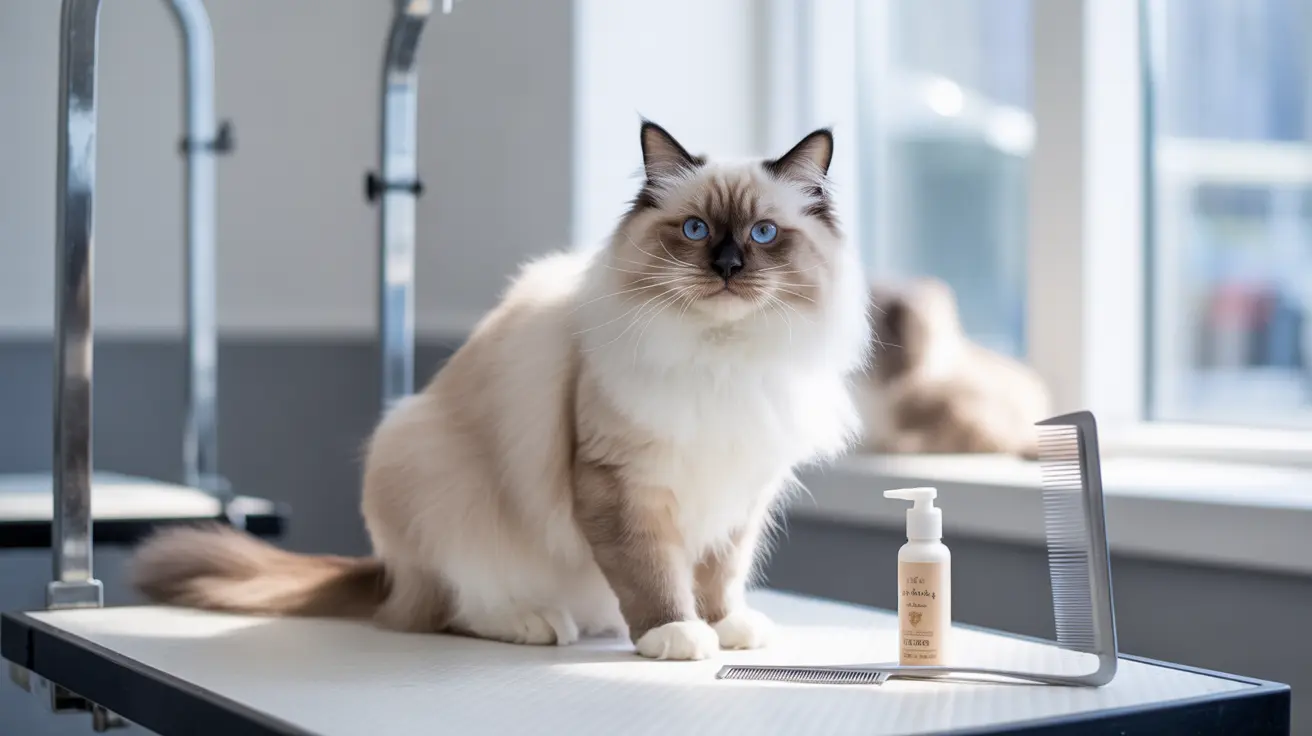When it comes to keeping your feline friend comfortable and well-groomed, understanding cat haircuts is essential. Whether you have a long-haired Persian or a domestic shorthair, different grooming styles can help manage shedding, prevent matting, and keep your cat healthy. In this comprehensive guide, we'll explore the most popular cat haircuts, their benefits, and when professional grooming might be necessary.
Popular Cat Haircut Styles and Their Benefits
The Classic Lion Cut
The lion cut is perhaps the most recognizable and dramatic of all cat haircuts. This style involves shaving the body while leaving fur around the face, legs, and tail tip, creating a majestic, lion-like appearance. It's particularly beneficial for cats with severe matting or those living in warmer climates.
The Practical Comb Cut
A comb cut maintains your cat's fur at a manageable one-inch length throughout the body. This versatile style works well for both long and short-haired cats, making regular grooming easier while still providing adequate protection for your cat's skin.
The Hygienic Sanitary Trim
This essential grooming style focuses on trimming the fur around sensitive areas to maintain cleanliness. It's particularly helpful for elderly cats or those with mobility issues who struggle with self-grooming.
When Professional Grooming Becomes Necessary
While regular brushing at home is important, certain situations call for professional intervention:
- Severe matting that can't be safely addressed at home
- Special grooming needs for long-haired breeds
- Elderly or special needs cats requiring extra care
- Complex styling requests like the lion cut
- Cats with skin conditions requiring careful handling
Tools and Techniques for Home Grooming
For successful home grooming maintenance between professional cuts, you'll need:
- Metal combs with wide and narrow teeth
- Professional-grade dematting tools
- Cat-specific grooming scissors
- Gentle slicker brushes
- Grooming wipes for sensitive areas
Important Health and Safety Considerations
Before pursuing any cat haircuts, consider these crucial factors:
- Your cat's overall health and temperament
- The natural thickness and condition of their coat
- Seasonal changes and environmental factors
- Your cat's age and any medical conditions
- The expertise required for different cutting styles
Seasonal Grooming Tips
Adjust your cat's grooming routine based on the season:
- Spring: Address heavy shedding with more frequent brushing
- Summer: Consider shorter cuts to help with heat management
- Fall: Maintain regular grooming to prevent matting
- Winter: Keep cuts longer to provide adequate warmth
Frequently Asked Questions
What are the main benefits of giving my cat a comb cut versus other cat haircuts?
A comb cut offers a balanced approach to grooming, maintaining a manageable length that reduces matting and shedding while preserving enough fur to protect the skin. Unlike more dramatic cuts like the lion cut, it provides a natural look that's easier to maintain at home.
How can I tell if my long-haired cat needs a lion cut or just a regular trim?
Consider a lion cut if your cat has severe matting that can't be brushed out, shows signs of overheating in warm weather, or has difficulty grooming themselves. A regular trim might suffice if the coat is generally manageable with only minor tangles.
What grooming tools and techniques work best to prevent matting and hairballs in cats?
Use a combination of wide-toothed combs for general detangling and fine-toothed combs for removing loose undercoat. Regular brushing sessions (2-3 times weekly for long-haired cats) using proper technique - brushing in the direction of hair growth - helps prevent both matting and hairballs.
When should I take my cat to a professional groomer for haircuts or mat removal?
Seek professional help if you encounter severely matted fur, if your cat becomes aggressive during grooming, or if you're dealing with a complicated style like the lion cut. Professional groomers have the tools and expertise to safely handle these situations.
How can I make grooming and haircuts a less stressful experience for my senior or anxious cat?
Start with short, positive grooming sessions, using treats and gentle praise. Consider scheduling grooming when your cat is naturally calm, such as after meals. For professional cuts, look for groomers who specialize in handling senior or anxious cats and offer calm, quiet environments.






